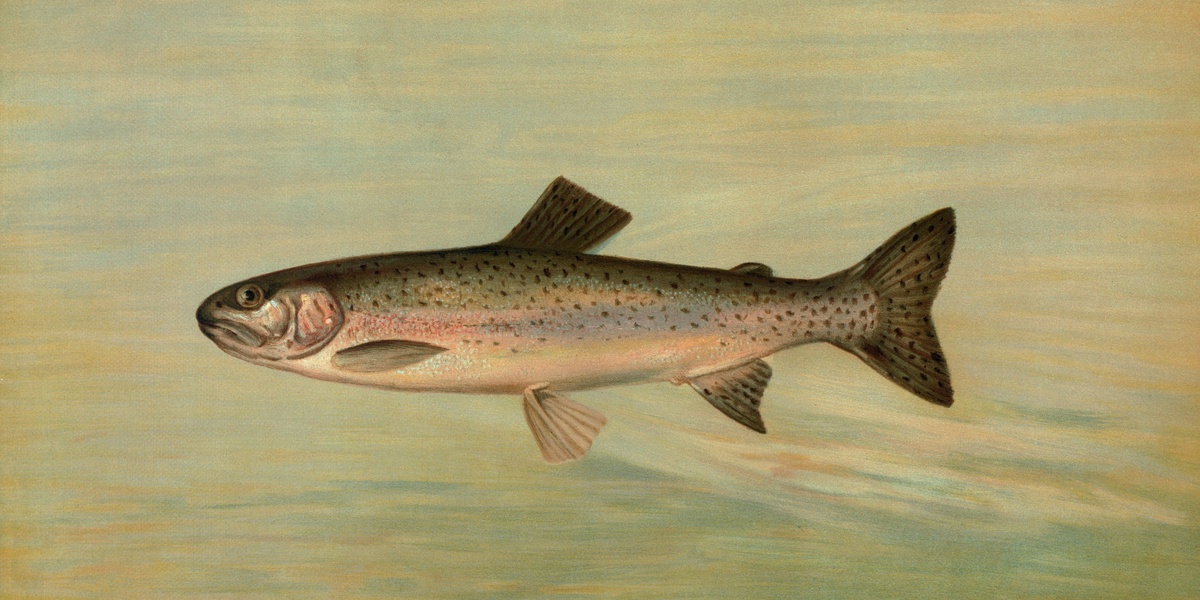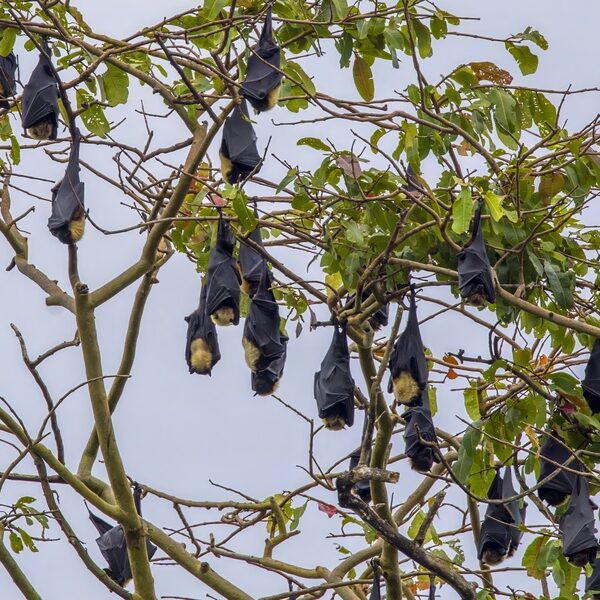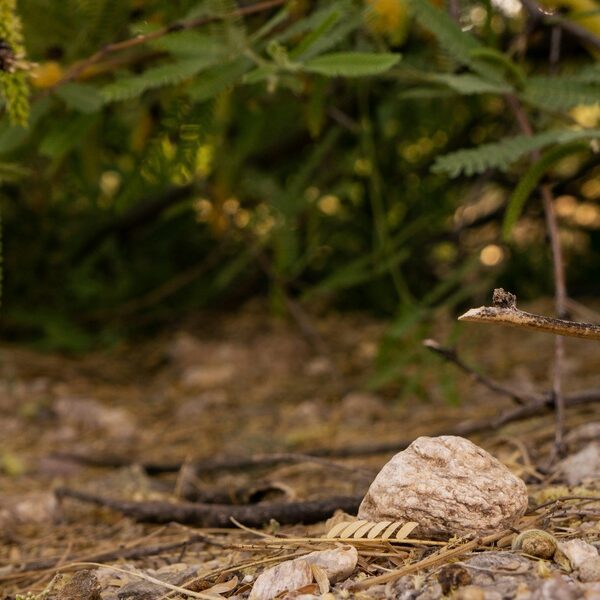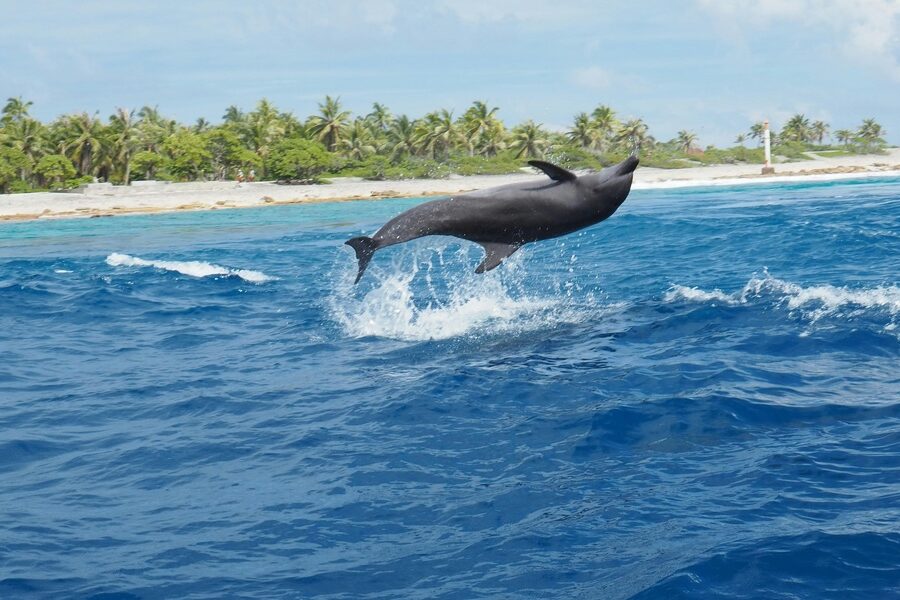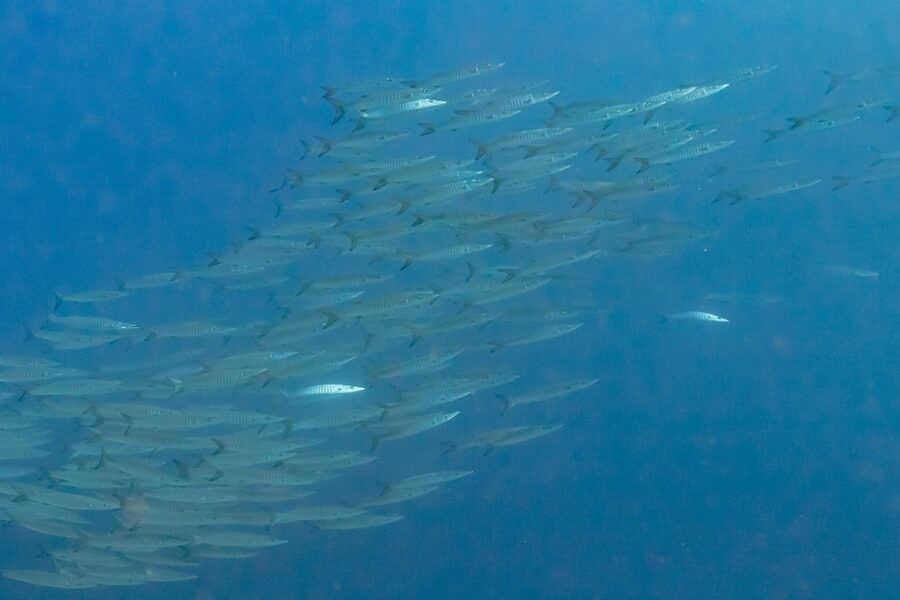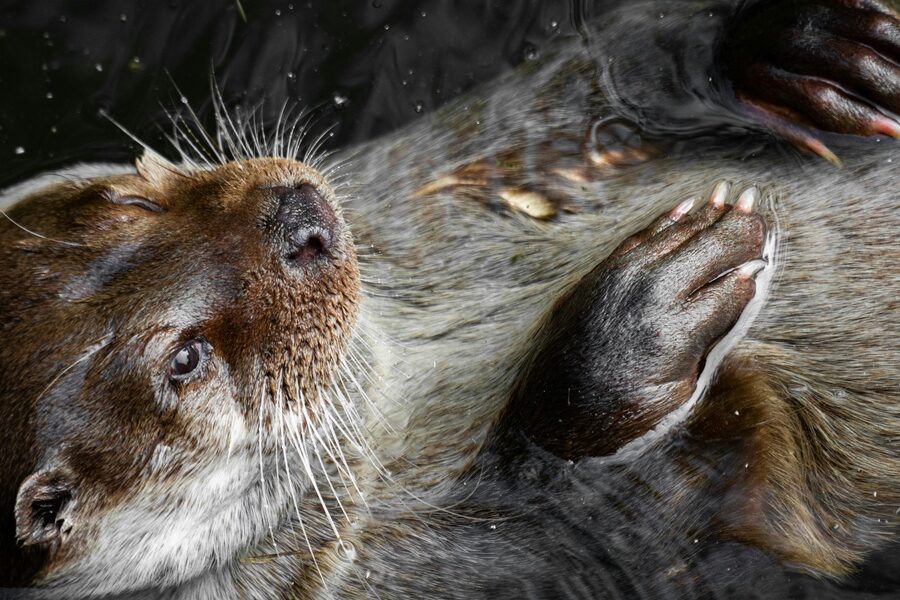North Macedonia’s lakes and rivers host a wide mix of freshwater species, from the clear, deep waters of Lake Ohrid to meandering lowland rivers and smaller mountain streams. Whether you’re planning a visit, compiling a checklist, or just curious about regional biodiversity, a concise list makes it easier to understand what lives here.
There are 53 Fish of North Macedonia, ranging from Balkan Golden Loach to Zander; for each species, the table lists Scientific name,Max length (cm),Primary location (NM) — you’ll find below.
Which species on the list are endemic to North Macedonia?
Endemic species are mostly associated with Lake Ohrid and, to a lesser extent, Lake Prespa; check the Primary location (NM) column for restricted ranges and match those entries with Scientific name to confirm identity. For field verification, compare local records or museum data, since endemism often hinges on very localized distribution.
How can I use the Scientific name,Max length (cm),Primary location (NM) data effectively?
Use Scientific name to avoid common-name confusion, Max length (cm) for quick size expectations and age-class guesses, and Primary location (NM) to target habitats or conservation priorities; remember that size and local occurrences can vary, so treat the table as a starting point and consult primary literature for precise studies.
Fish of North Macedonia
| Common name | Scientific name | Max length (cm) | Primary location (NM) |
|---|---|---|---|
| Ohrid Trout | Salmo letnica | 90 | Lake Ohrid |
| Belvica | Salmo ohridanus | 40 | Lake Ohrid |
| Prespa Trout | Salmo peristericus | 45 | Lake Prespa tributaries |
| Macedonian Chub | Squalius macedonicus | 25 | Vardar River system, Lake Dojran |
| Vardar Chub | Squalius vardarensis | 30 | Vardar River and its tributaries |
| Ohrid Roach | Pachychilon pictum | 20 | Lake Ohrid, Lake Skadar |
| Prespa Roach | Rutilus prespensis | 22 | Lake Prespa |
| Dojran Roach | Rutilus doiranensis | 25 | Lake Dojran |
| Macedonian Nase | Chondrostoma macedonicum | 35 | Vardar River system |
| Prespa Nase | Chondrostoma prespense | 30 | Lake Prespa |
| Ohrid Spined Loach | Cobitis ohridana | 11 | Lake Ohrid, Drin River basin |
| Macedonian Spined Loach | Cobitis vardarensis | 12 | Vardar River system |
| Ohrid Gudgeon | Gobio ohridanus | 14 | Lake Ohrid, Drin River |
| Macedonian Barbel | Barbus macedonicus | 50 | Vardar and Struma river systems |
| Prespa Barbel | Barbus prespensis | 40 | Lake Prespa and its tributaries |
| Common Carp | Cyprinus carpio | 120 | Most lakes and slow-moving rivers |
| Prussian Carp | Carassius gibelio | 45 | Widespread in still or slow-flowing waters |
| Goldfish | Carassius auratus | 40 | Ponds, reservoirs, slow rivers |
| Grass Carp | Ctenopharyngodon idella | 150 | Introduced into lakes and reservoirs |
| Silver Carp | Hypophthalmichthys molitrix | 100 | Introduced into larger lakes and rivers |
| Tench | Tinca tinca | 70 | Lakes, ponds, and slow rivers |
| Common Bream | Abramis brama | 80 | Lakes Dojran and Prespa, Vardar River |
| White Bream | Blicca bjoerkna | 45 | Vardar River, Lake Dojran |
| Vimba Bream | Vimba melanops | 40 | Vardar River system, Lake Dojran |
| Pumpkinseed | Lepomis gibbosus | 40 | Widespread in lakes and ponds |
| Northern Pike | Esox lucius | 150 | Lakes Ohrid, Prespa, Dojran, Vardar River |
| Wels Catfish | Silurus glanis | 300 | Lakes Dojran, Tikveš, Vardar River |
| Brown Bullhead | Ameiurus nebulosus | 55 | Widespread in still waters |
| European Perch | Perca fluviatilis | 60 | Lakes Prespa, Dojran, Vardar River system |
| Zander | Sander lucioperca | 130 | Vardar River, major reservoirs like Tikveš |
| Rainbow Trout | Oncorhynchus mykiss | 120 | Stocked in cold rivers and reservoirs |
| Brown Trout | Salmo trutta | 100 | Cold mountain streams and rivers |
| European Eel | Anguilla anguilla | 150 | Lake Ohrid, Black Drin River |
| Ohrid Minnow | Pelasgus minutus | 9 | Lake Ohrid |
| Prespa Minnow | Pelasgus prespensis | 7 | Lake Prespa |
| Topmouth Gudgeon | Pseudorasbora parva | 11 | Widespread in various water bodies |
| Ohrid Alburnus | Alburnoides ohridanus | 12 | Lake Ohrid |
| Prespa Spirlin | Alburnoides prespensis | 10 | Lake Prespa tributaries |
| European Bitterling | Rhodeus amarus | 10 | Slow rivers and lakes, Vardar system |
| Stone Loach | Barbatula barbatula | 20 | Clear, fast-flowing streams and rivers |
| Thracian Gudgeon | Gobio bulgaricus | 15 | Vardar and Struma river systems |
| Common Rudd | Scardinius erythrophthalmus | 50 | Lakes Dojran and Prespa, lowland rivers |
| Dalmatian Barbelgudgeon | Aulopyge huegelii | 20 | Recorded in the Treska River |
| Balkan Golden Loach | Sabanejewia balcanica | 10 | Vardar and Struma river systems |
| Italian Chub | Squalius squalus | 60 | Black Drin River system |
| Mediterranean Bleak | Alburnus demiri | 18 | Lake Dojran, Vardar and Struma rivers |
| Macedonian Shad | Alosa macedonica | 35 | Lake Volvi (Greece), historically Vardar system |
| River Blenny | Salaria fluviatilis | 15 | Lakes Ohrid and Prespa |
| Three-spined Stickleback | Gasterosteus aculeatus | 11 | Lake Dojran, colder streams |
| Western Vardar Spined Loach | Cobitis strumicae | 13 | Strumica River (Struma basin) |
| Balkan Loach | Cobitis elongata | 15 | Historically in Vardar tributaries |
| Macedonian Brook Lamprey | Eudontomyzon macedonicus | 20 | Vardar River tributaries |
| Pigo | Rutilus pigo | 45 | Black Drin River system |
Images and Descriptions
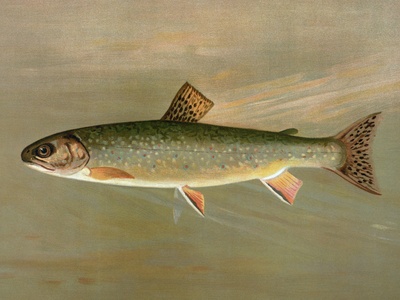
Ohrid Trout
A critically endangered, endemic trout species famous for its delicious pink flesh. It is a prized game fish and a symbol of Lake Ohrid’s unique biodiversity, with several distinct seasonal forms that spawn at different times.
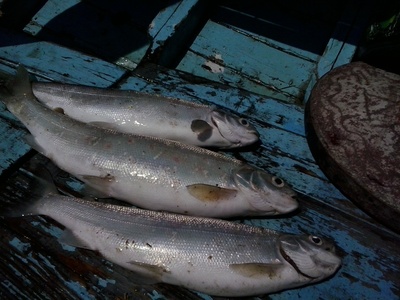
Belvica
Also known as the Ohrid belvica, this is another endemic salmonid of Lake Ohrid. It is smaller than the Ohrid trout, silvery in color, and faces threats from hybridization and competition with introduced species.
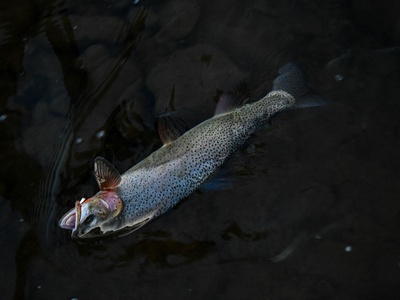
Prespa Trout
An endemic trout species found only in the cold, clear streams flowing into Lake Prespa. It is critically endangered due to habitat degradation, water abstraction, and the introduction of non-native trout species.
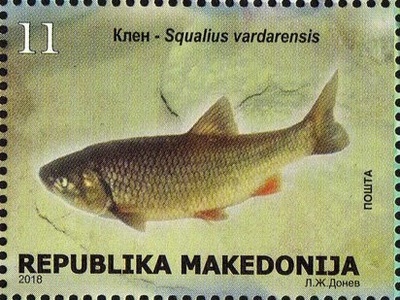
Macedonian Chub
A common native chub found in rivers and lakes of the Aegean basin. It’s a moderately sized, silvery fish often found in schools, playing a key role in the riverine ecosystem.
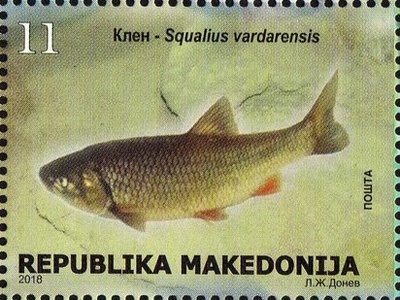
Vardar Chub
A species of chub native to the Vardar river system. It prefers moderate to fast-flowing waters and is an important part of the local river fauna, often caught by local anglers.
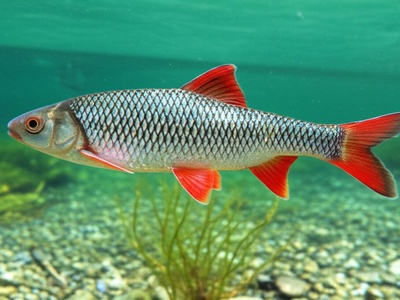
Ohrid Roach
An endemic cyprinid known for its vibrant breeding colors. It forms large schools near the shores of Lake Ohrid, feeding on plankton and small invertebrates. It is a crucial part of the lake’s food web.
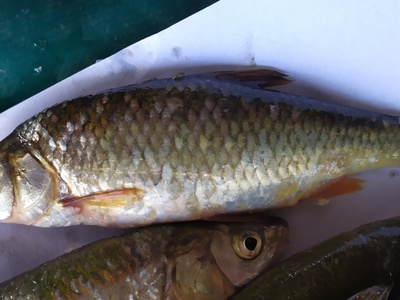
Prespa Roach
An endemic roach species confined to Lake Prespa. It is an important commercial fish in the region but is considered vulnerable due to water level fluctuations, pollution, and habitat changes in the lake.
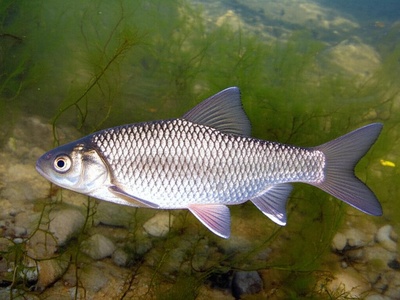
Dojran Roach
This roach is native to Lake Dojran and surrounding systems. It has adapted to the lake’s shallow, warm, and eutrophic conditions and was historically a major commercial catch before the lake’s ecological crises.
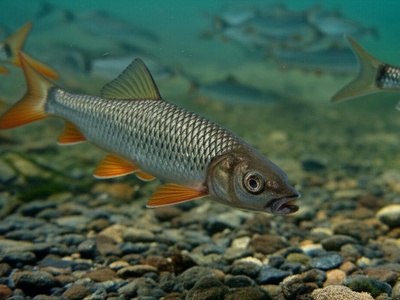
Macedonian Nase
A native nase species of the Vardar basin. It has a distinctive underslung mouth used for scraping algae off rocks in flowing rivers. It is a social fish, often forming large schools.
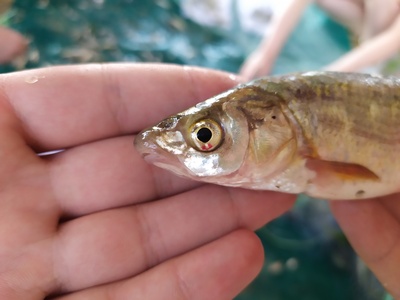
Prespa Nase
Endemic to Lake Prespa, this nase is adapted to lake life but migrates to inflowing streams to spawn. Its population is vulnerable to habitat alterations and water quality issues affecting the lake and its tributaries.
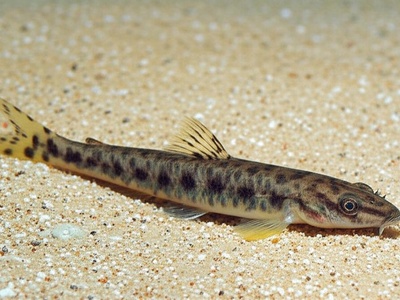
Ohrid Spined Loach
A small, bottom-dwelling loach endemic to the Lake Ohrid-Drin River system. It has a distinct mottled pattern for camouflage and uses sharp, sub-orbital spines for defense. It burrows in sandy or muddy substrates.
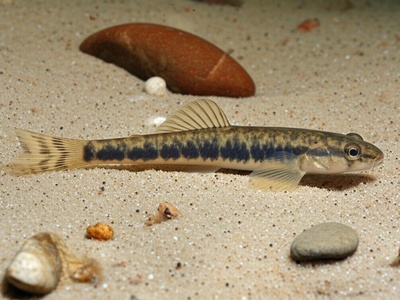
Macedonian Spined Loach
A small, native loach found in the Vardar River and its tributaries. It prefers slow-flowing waters with sandy bottoms where it can bury itself. Its patterned body provides excellent camouflage against predators.
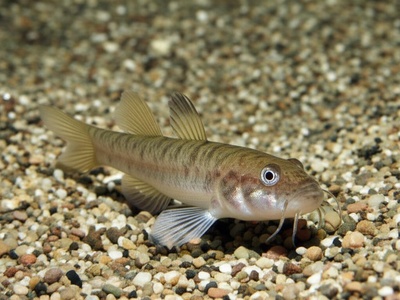
Ohrid Gudgeon
An endemic gudgeon found in Lake Ohrid and the upper Black Drin River. It’s a bottom-feeder with barbels around its mouth to help locate food in the sediment. It plays an important role in the benthic community.
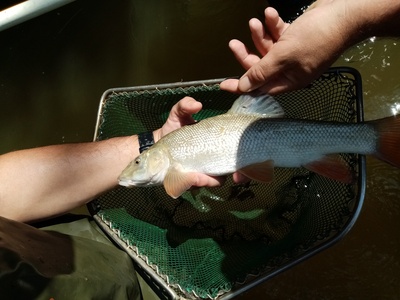
Macedonian Barbel
A large, powerful barbel native to rivers draining into the Aegean Sea. It is a popular sport fish, known for its strong fight. It prefers the gravelly bottoms of flowing rivers.

Prespa Barbel
This barbel is endemic to the Lake Prespa basin. It inhabits the lake but ascends tributary streams to spawn. Its population is threatened by habitat degradation and water management issues affecting the lake.
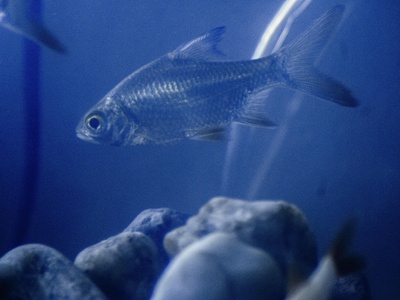
Common Carp
A widespread introduced species, now one of the most common large fish. Prized by anglers for its size and strength, it thrives in warm, weedy waters like Lake Dojran and many reservoirs.
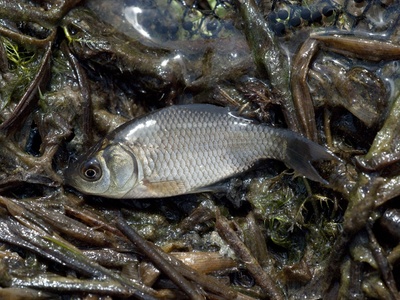
Prussian Carp
A highly invasive and adaptable introduced species, often mistaken for Crucian carp. It can reproduce gynogenetically, allowing all-female populations to expand rapidly, often outcompeting native species in lakes and canals.
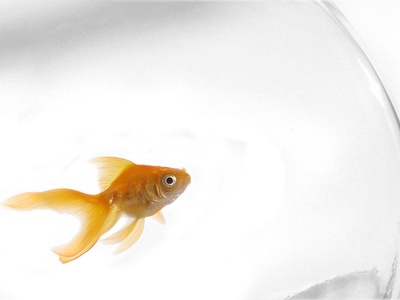
Goldfish
Originally an ornamental fish, introduced populations are established in various water bodies. They are hardy and can tolerate poor water quality, sometimes hybridizing with other Carassius species.
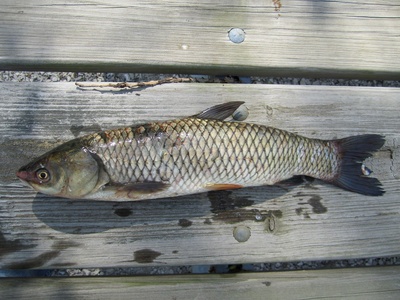
Grass Carp
A large herbivorous fish introduced for aquatic weed control. It can grow to massive sizes but does not typically reproduce naturally in North Macedonia, relying on stocking. Found in places like Lake Tikveš.
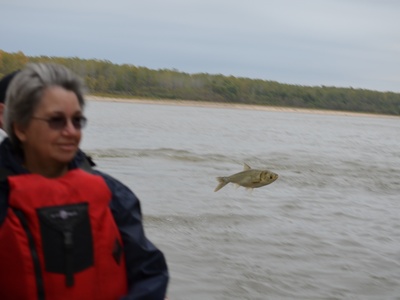
Silver Carp
An introduced filter-feeding carp, known for its habit of leaping out of the water when startled. It was stocked to improve water quality but can outcompete native plankton-feeding fish.
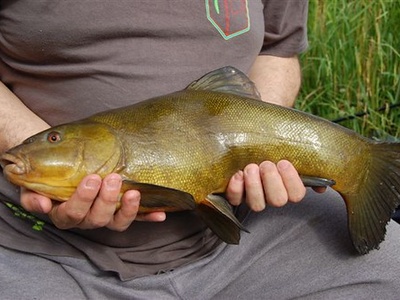
Tench
A native, bottom-dwelling fish with olive-green skin and a distinctive red eye. It prefers weedy, muddy environments and is known for its thick slime coat, which was once thought to have healing properties.
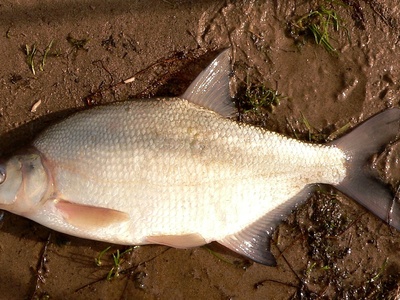
Common Bream
A deep-bodied, silvery fish common in large, slow-flowing rivers and nutrient-rich lakes. It feeds on the bottom in large shoals and is a popular target for coarse anglers.
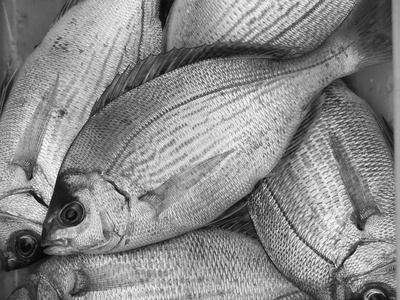
White Bream
Smaller than the Common Bream, with larger scales and reddish pectoral fins. It often schools with other cyprinids in the slow-flowing sections of rivers and in lakes, feeding on invertebrates and plant matter.
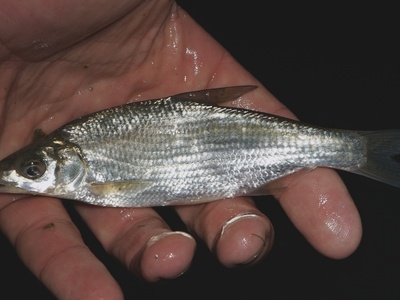
Vimba Bream
Distinguished by its long snout and silvery body, this fish inhabits rivers and lakes. It undertakes upstream migrations to spawn on gravel beds, a behavior that is often hampered by dams.
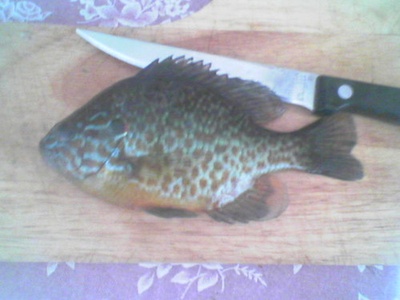
Pumpkinseed
A colorful, introduced sunfish from North America. It is highly adaptable and has established populations in many still waters, where it can become invasive and impact native invertebrate and fish populations.
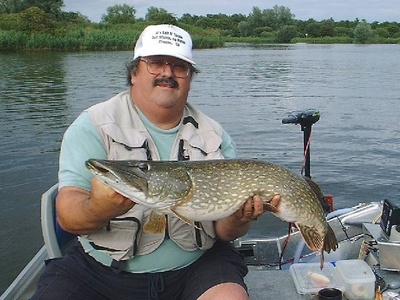
Northern Pike
A top aquatic predator known for its ambush hunting style and tooth-filled, duck-bill-like snout. It is native to some parts of the country and a popular, challenging game fish for anglers.
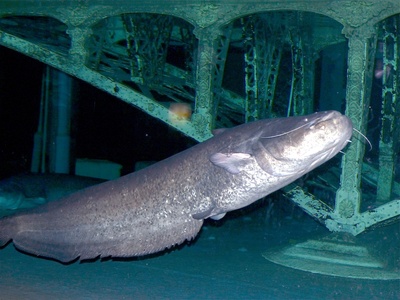
Wels Catfish
Europe’s largest freshwater fish, a massive predator that can grow to incredible sizes. It is a prized catch for trophy anglers and thrives in large, warm lakes and slow-moving rivers, hunting fish and even waterfowl.
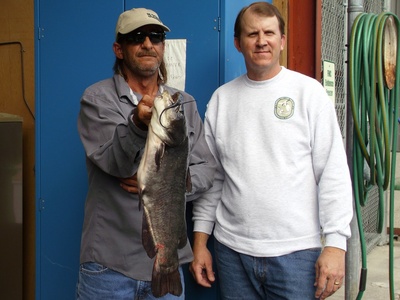
Brown Bullhead
An introduced catfish from North America. It is extremely hardy, able to tolerate low oxygen levels and pollution. It is an opportunistic bottom-feeder and can become overabundant in ponds and reservoirs.
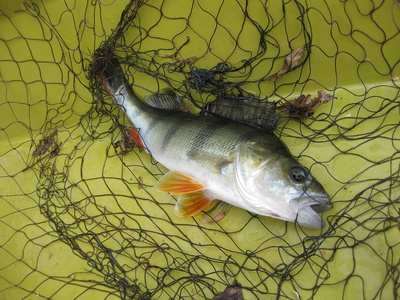
European Perch
A common predatory fish with a spiny dorsal fin and distinctive dark vertical bars. It is found in a wide variety of habitats and is popular with anglers for both sport and its excellent taste.
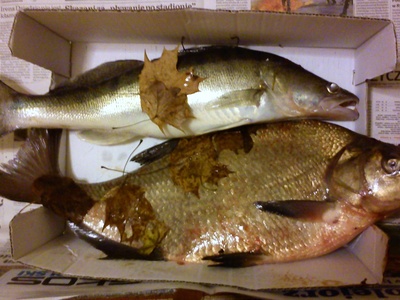
Zander
A large, predatory member of the perch family, introduced as a sport fish. It prefers large, murky waters and is known for its sharp teeth and excellent vision in low light, making it an effective nocturnal hunter.
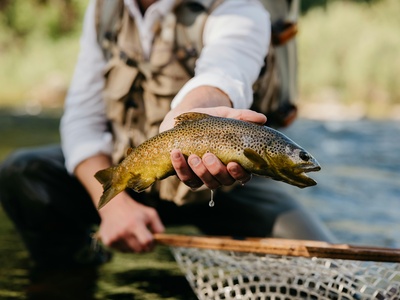
Rainbow Trout
A North American species widely introduced for aquaculture and sport fishing. It requires cold, clean water to thrive and is regularly stocked in mountain streams and reservoirs for anglers.
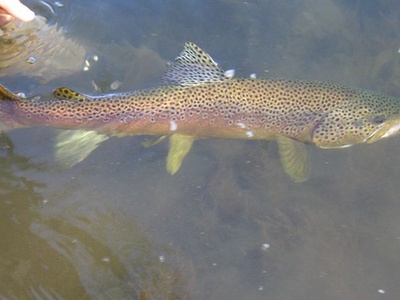
Brown Trout
A native trout species found in colder, well-oxygenated rivers and streams throughout the country. It is highly prized by fly fishers for its beauty and fighting spirit. Local populations show significant genetic diversity.
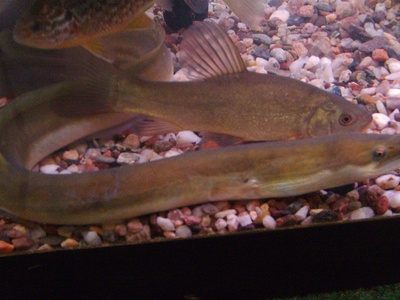
European Eel
A critically endangered, snake-like fish that begins life in the Atlantic Ocean. It migrates to freshwater habitats like Lake Ohrid to mature over decades before returning to the sea to spawn and die.

Ohrid Minnow
A small, endemic minnow found in the springs and wetlands surrounding Lake Ohrid. It is critically endangered due to habitat destruction and water pollution from agriculture and urban development.
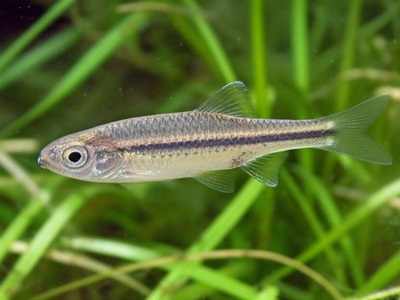
Prespa Minnow
A tiny endemic minnow found only in Lake Prespa. It lives in shallow, vegetated areas and is threatened by the lake’s fluctuating water levels, pollution, and predation by introduced species.
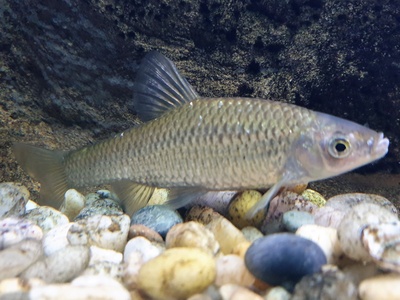
Topmouth Gudgeon
A small, highly invasive fish from Asia that has spread rapidly across Europe. It is a carrier of a deadly parasite that affects other cyprinid species and can quickly dominate small water bodies.

Ohrid Alburnus
An endemic spirlin found in Lake Ohrid and its tributaries. It has a silvery, streamlined body adapted for life in both the lake and flowing streams where it spawns. It is an important forage fish.
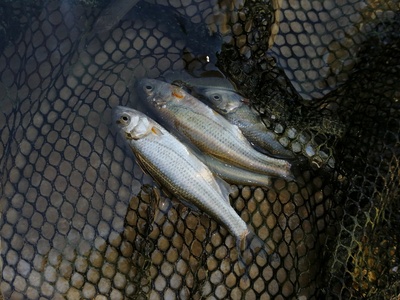
Prespa Spirlin
This small, endemic fish is found in the streams that flow into Lake Prespa, not the lake itself. It is adapted to fast-flowing, clear water and is vulnerable to changes in its stream habitats.
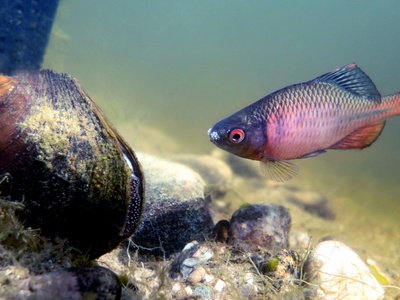
European Bitterling
A small, deep-bodied fish known for its unique reproductive strategy. The female uses a long ovipositor to lay her eggs inside the gills of living freshwater mussels, where the young develop safely.
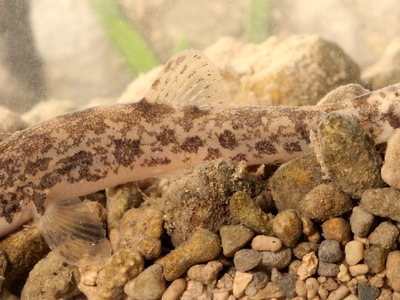
Stone Loach
A common, small bottom-dweller found in well-oxygenated streams with gravelly beds. It uses its barbels to find insect larvae and other invertebrates, often hiding under stones during the day.
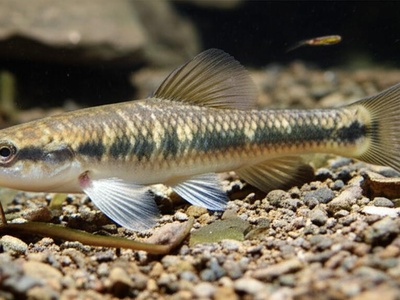
Thracian Gudgeon
A species of gudgeon found in the rivers of the Aegean drainage. It is a bottom-dweller, preferring sandy or gravelly substrates in moderate currents, where it forages for small invertebrates.
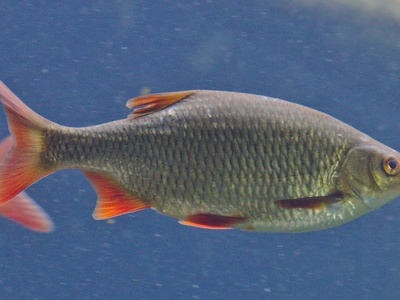
Common Rudd
A brightly colored fish with deep red fins, often confused with the roach. It prefers weedy, still, or slow-flowing waters and often feeds near the surface on insects and plant matter.
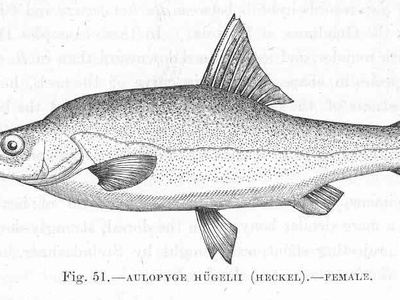
Dalmatian Barbelgudgeon
A rare and vulnerable fish, primarily found in the Dinaric Karst region. Its presence in North Macedonia is limited. It is unique for its scaleless body and preference for subterranean or karst river systems.
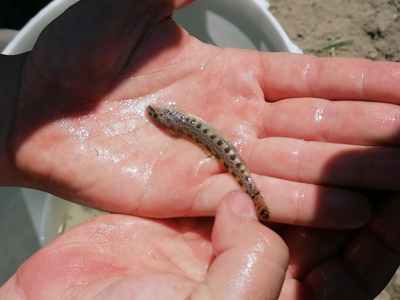
Balkan Golden Loach
A small, slender loach with a series of dark blotches along its side. It inhabits sandy and gravelly bottoms of rivers and streams, where it burrows to escape predators and strong currents.
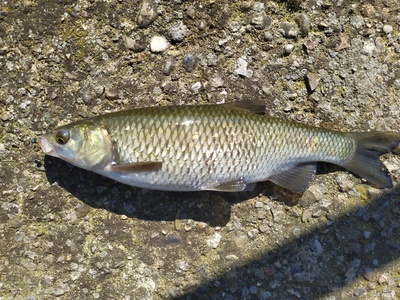
Italian Chub
A large chub species found in the Black Drin River, which flows from Lake Ohrid. It is an omnivorous fish that thrives in a variety of river habitats, from slower stretches to faster currents.
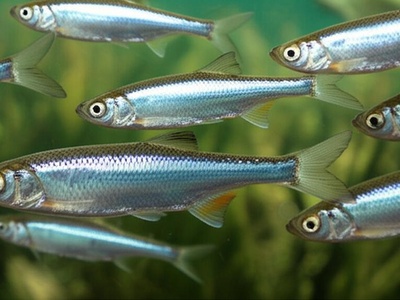
Mediterranean Bleak
A small, silvery schooling fish, also known as the Dojran bleak. It is an important part of the food web, serving as prey for larger fish and birds. It was once a significant commercial catch.
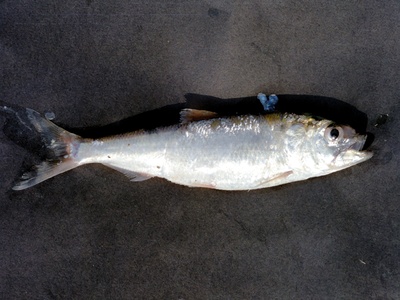
Macedonian Shad
A landlocked shad species, primarily found in Greece but historically connected to the lower Vardar system. Its presence in North Macedonian waters is considered rare or possibly extirpated due to river modifications.
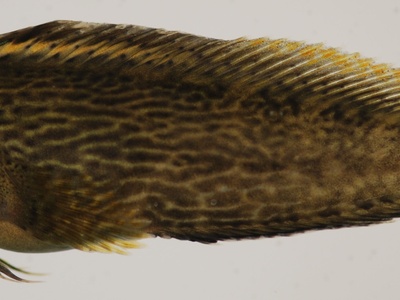
River Blenny
A small, bottom-dwelling fish with a distinctive, continuous dorsal fin. The Lake Ohrid population is particularly notable. It lives among stones in shallow water, with males guarding nests of eggs.
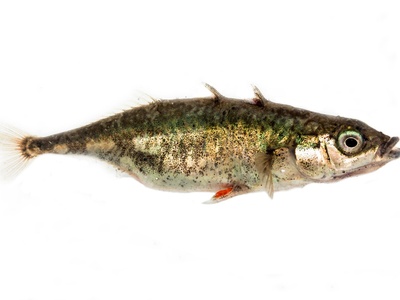
Three-spined Stickleback
A small fish famous for the three sharp spines on its back and complex nesting behavior. The male builds an intricate nest from plant material and performs a zig-zag dance to attract a female.
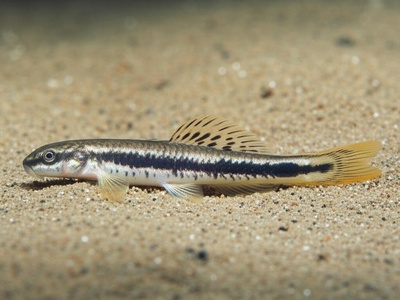
Western Vardar Spined Loach
A small loach found in the Struma river basin in the eastern part of the country. Like other spined loaches, it prefers sandy or muddy bottoms and has a distinctive pattern for camouflage.
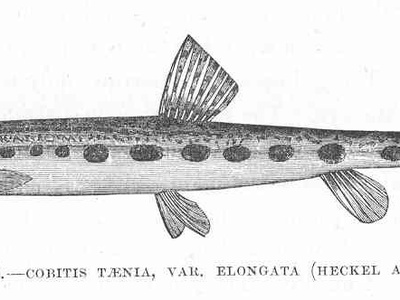
Balkan Loach
A larger species of loach, primarily found further west in the Balkans. Its presence in North Macedonia is marginal and not well-documented, inhabiting clear, flowing streams.
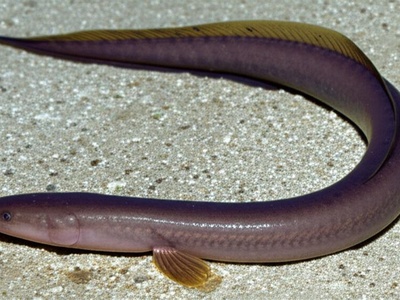
Macedonian Brook Lamprey
A jawless, eel-like fish that is non-parasitic. As an adult, it does not feed; its sole purpose is to reproduce. The larvae, called ammocoetes, live for years buried in stream sediment, filter-feeding.
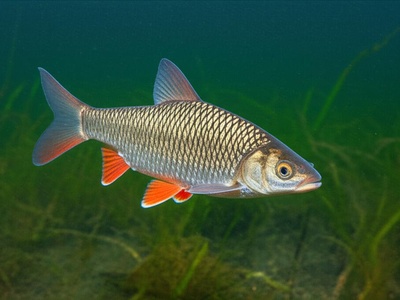
Pigo
A large roach-like cyprinid found in the Black Drin river system. It prefers clear, deep waters and undertakes spawning migrations. It’s less common than other roaches and chubs in the area.
